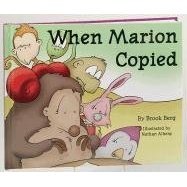Plagiarism Prevention Can Start At An Early Age
02/08/2007 10:23 Filed in: Books & Literature

With younger students, plagiarism often occurs out of ignorance. How many of us turned in reports copied out of the World Book Encyclopedia word for word when we were younger simply because no one told us that doing such was wrong? And I admit right here that the first term paper I ever turned in was plagiarized; but at the time (9th grade), I had no idea that what I was doing was wrong. I came into my school mid-year and one of my courses was at an advanced level that required a term paper for higher credit. The other students had written their papers at the beginning of the year with complete instructions on how to do so. When I asked my teacher how to write a term paper, she said that basically I had to use a minimum of six other sources in my paper. So I simply divided the minimum page requirement for the paper into six parts, wrote down information from each book in my notebook, and then had my mother type it up for me (she was a much faster typist at the time). I even listed the six sources on a bibliography page in the back of the book, and did not realize until two years later when we wrote term papers in my junior year English class that what I had done as a freshman was wrong.
I found it interesting in Berg's book that the source of plagiarism for her fictional characters was not the encyclopedia as it was in my day, but the internet. This certainly brings this issue up to date because the main source today for plagiarized texts among students of any age is the internet. When Marion Copied is aimed at elementary age children, but it's almost just as tempting to read it in a college classroom as well.
This is a book you certainly should pick up for your children if they are in elementary grades, and you might even want to consider donating a copy to their classroom or school's library as well.









